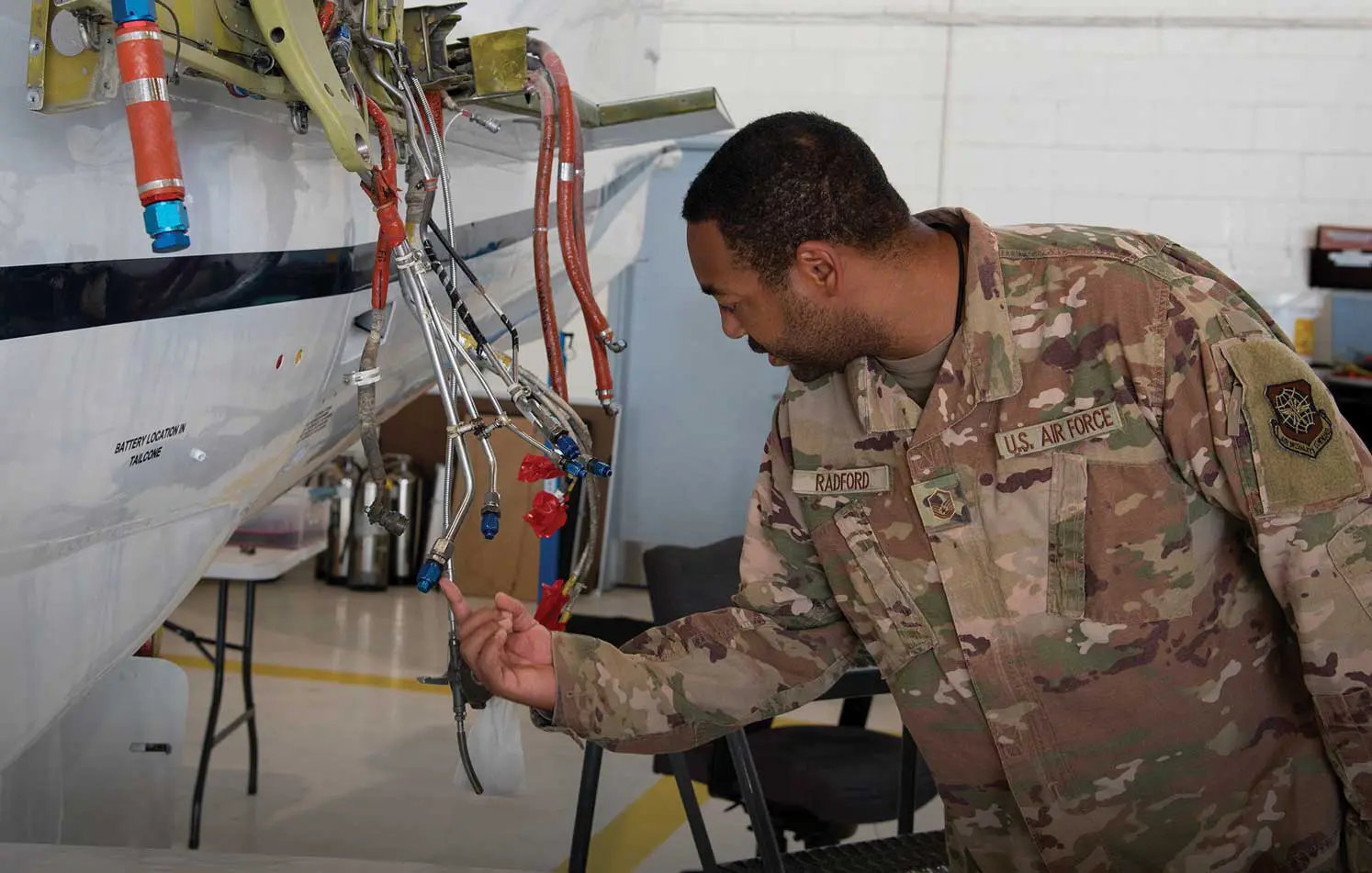“Safety First” Protects Airmen, Resources
By SRA GREG ERWIN, 375th AIR MOBILITY WING PUBLIC AFFAIRS
You may have seen these signs around your base: “CAUTION: WATCH YOUR STEP,†“DANGER: HIGH VOLTAGE,†or even “CONSTRUCTION AREA: AUTHORIZED PERSONNEL ONLY.â€
But what you may not have seen are the efforts of the men and women of the 375th Air Mobility Wing’s (AMW) Safety Office who are responsible for protecting the personnel and resources of Scott Air Force Base (AFB) in Illinois.
“What we are trying to do is safeguard personnel,†said Thomas Kelly, the wing’s Occupational Safety Manager. “And we want to protect every resource on the installation … to ensure there are no mishaps.â€
Safety’s primary mission is to analyze mishaps and accidents, from minor cuts to fatalities—and everything in between. When analyzing each incident, they trace what caused the accident to occur. Once the issue is identified, they suggest changes in procedure to prevent those mishaps from occurring again.
“The most common mishap we have seen at Scott [AFB] are slips, trips, and falls,†Kelly said. “One difference between DoD [Department of Defense] safety programs and OSHA [Occupational Safety and Health Administration] in the civilian sector is that we track all mishaps, whether on or off duty. So, when we identify an occupational hazard or deficiency, knowing that it could prevent someone from being seriously hurt or even killed is really gratifying … and makes me proud of the mission we do.â€
Another aspect of occupational safety is inspecting all facilities, and although the COVID-19 pandemic caused some disruptions, he said they are now able to continue the inspection component of their mission.
“Our annual inspections are not just an Air Force mandate—it’s a public law requirement. Now that we are back to a more standard operational tempo, we are getting those agencies that we have missed over the past couple of months scheduled for inspections so we can get caught up,†explained Kelly.
Safety also encompasses flight and weapons safety. Although occupational safety covers most items around the base, from facility inspections to industrial operations, flight and weapons safety are more specific, according to TSgt Christopher Knight, Weapons Safety Manager.
“Anybody who is handling, storing, or maintaining munitions falls under the wing’s weapons safety program. We check the lesson plans and operating instructions to make sure that they are current with regulations and that they are compliant,†Knight said.
He said there has been an increase in readiness and mobility since he has been in this role.
Knight continued, “Between the additional exercises and training, the level of involvement and visibility in those types of programs has increased, and we have been able to make some good strides in weapons safety.â€
MSgt Robert Radford, 375 AMW Flight Safety Noncommissioned Officer in Charge, said that, because Scott has a unique mission, their main focus is not maintenance safety but other safety programs, such as the Bird/Wildlife Aircraft Strike Hazard program and the Mid-Air Collision and Avoidance program. These programs prevent the loss of life and limb of Airmen, not just at Scott AFB but throughout the Air Force.
Mishap data collected from the entire Air Force are analyzed and disseminated by the Air Force Safety Center to prevent similar mishaps from occurring elsewhere. This critical information can prevent the loss of life, limb, or eyesight, said Radford.
“Safety first means ‘Think before you act.’ It is taking the first step to ensure the scene is safe before taking action. It has been proven throughout history that safety—whether it is occupational safety, weapons safety, or flight safety—can help to save someone’s life,†said Radford.

